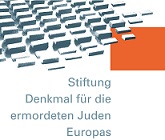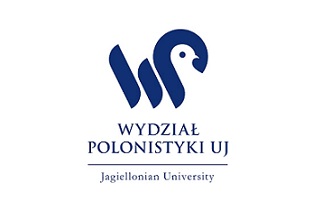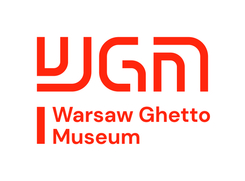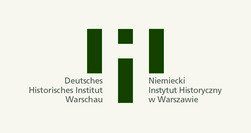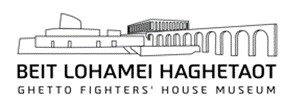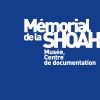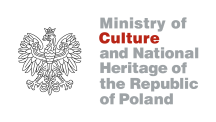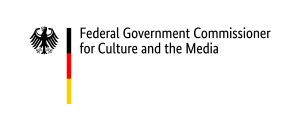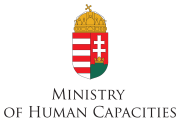The online debate will take place on YouTube on 19 November (Thursday) at 15:00–18:30 CET.
* Please note that all times are indicated according to Warsaw time, i.e. Central European Time (UTC+1:00).
KEYNOTE
Jackie Feldman (Ben Gurion University of the Negev)
The Vanishing Body of the Witness: Transmission of the Shoah in a Digital Generation
PANEL PRESENTATIONS
Sharon Zelnick (University of California, Los Angeles)
Migratory Reimaginations: Postmemorial Work of Israeli Migrants to Germany
Weronika Romanik (Göttingen Institute of Advanced Study)
Transformations of Memory in the Microperspective: The Hebrew Editions of Writings from the Underground Archive of the Bialystok Ghetto
Liat Steir-Livny (Sapir College and The Open University, Israel)
Eva.Stories: A New Dimension of Holocaust Memory on Instagram: Between the Universal and the Local
Lea Ganor (Mashmaut Center, Kiryat Motzkin – Bar Ilan University)
Practices of Remembering and Oblivion: Life Stories of Holocaust-Survivor Aircrew Members in the Israeli Air Force: A Case Study
Lior Inbar (The Ghetto Fighters’ House Museum, Beit Lohamei Haghetaot)
The Ghetto Fighters’ House Archives in Israel 1950–2020
VIDEO PRESENTATION
Eliyana Adler (Pennsylvania State University)
Ecologies of Memory: Translating Memorial Books across Time and Place
Chair: Hanna Węgrzynek (Warsaw Ghetto Museum)
Commentary: Anna Sommer Schneider (Georgetown University, Washington, DC)
ABSTRACTS
Jackie Feldman
The Vanishing Body of the Witness: Transmission of the Shoah in a Digital Generation
At present, Holocaust memory is shaped by two major generational phenomena: the passing away of the last of the eyewitnesses and the rapid development of digital memory. We propose that interactive holograms, selfies at death camps and memorials, and recordings of survivors displaying their personal effects present alternatives to the missing body of the witness. By examining several current media practices within a historical and social framework of Shoah transmission, we argue that contemporary digital technologies in Israel attempt to preserve the embodied witness (and not just his story) as the witnesses are passing away. We begin with a brief sketch of the role of generations as carriers of particular memories, and argue for the relevance of media technologies in determining the shape of memory. We outline several challenges that digital and social media pose for understandings of collective memory of the Holocaust. We then apply these issues to several contemporary Israeli expressions of memory: selfies in concentration camp visits, the shift from nation-wide ceremonies held at key symbolic sites to on-line, home-based gatherings, the diffusion of Holocaust humor and satires in electronic and social media, and the conservative reaction to digital technologies on the part of Israeli Holocaust museums. Much research on Israeli collective memory has relied on school curricula and textbooks, Holocaust museums, commemorative ceremonies, Poland voyages, museums and political pronouncement of government leaders and politicians. We suggest that the current generation is far more influenced by global digital and social media. The interactive, popular, more iconic and less hierarchical nature of media technologies pose challenges for traditional conceptualizations of collective memory. We suggest that digital media respond to the demise of the living Shoah witness, by shifting emphasis from the witness to the witnessee.
Sharon Zelnick
Holocaust Postmemories and Occupation Hauntings in Dani Gal’s White City
Located at the intersection of memory and migration studies, my paper focuses on the recent influx of Israeli migrants to Germany. The majority of these migrants are third-generation Holocaust descendants, sparking the question of how their relation to this trauma is transformed when they move to the country from which their grandparents fled. The emerging body of work created by Israeli migrants in Germany, such as Hebrew literary magazines, films, poetry collections, photography series, and plays dealing with the Holocaust, and often also their recent memories of the Israeli occupation of Palestine, call attention to the unique memory dynamics of third-generation descendants who have moved there. How does being in Germany cause Israelis to renegotiate their relationship to Palestine? In my paper I will unpack this underexamined phenomenon by focusing on works by Israeli-born, Berlin-based photographer Benyamin Reich’s series Imagine (2018- ) and filmmaker Dani Gal’s White City (2018). My research draws from recent memory studies scholarship such as Astrid Erll’s perspective of the constantly mobile nature of memory, Michael Rothberg’s concept of “multidirectional memory” and Marianne Hirsch’s theory of “postmemory.” This paper seeks to 1) unpack the unique memory dynamics that take place when Israeli third-generation Holocaust descendants immigrate to the place from which their grandparents suffered and subsequently emigrated from and 2) more broadly approach the question of how we can understand memory that has intergenerationally migrated back to its origin. Thus, my paper aims to: contribute to the growing interest within cultural memory studies on the relations between intergenerational memory and migration and address how Holocaust postmemories shift when Israelis move to Germany, especially when their works critically engage with their own, more recent traumatic encounters in Palestine.
Weronika Romanik
Transformations of Memory in the Microperspective. The Hebrew Editions of the Writings from the Underground Archive of Bialystok Ghetto
The Underground Archive of Bialystok Ghetto was initiated by Mordechai Tenenbaum-Tamaroff, a leader of the Jewish resistance movement, a member of Dror Hechalutz. In 1943 Tenenbaum wrote a diary and other testimonies. His works are written mostly in Hebrew with some parts in Yiddish, Polish, German and Russian. They were published twice in Hebrew editions, titled Dappim min hadelekah: in 1947 (annotated by Yitzhak Zuckerman) and 1984 (edited by Zvi Shner and Bronka Klibanski). In the presentation I would like to reflect on the role of editors and translators in the process of transferring knowledge and shaping memory in the critical editions. This will include the comparative analysis of the original manuscript by Tenenbaum and its published versions in Hebrew. The changes occurring in these narratives I call the ‘transformations of memory’. I would like to present these ‘transformations’ by referring especially to the concept of cultural memory as introduced by Aleida Assmann. The key questions that I pose are: In what way the narrative may be changed during the translation, editing and archiving processes? In what way the memories are transferred and transformed in these specific sources? In the case of Dappim min hadelekah the editors were distinguished experts on Holocaust history: Zuckerman and Klibanski were themselves Holocaust survivors, Zvi Shner was one of the founders of the Ghetto Fighters’ House and was involved in numerous scholarly publications on Holocaust. The personal involvement of the editors, who belonged to the first generation of the Holocaust researchers is especially interesting aspect of the analyzed material.
Liat Steir-Livnys
Eva Stories – New Dimension of Holocaust Memory on Instagram: Between the Universal and the Local
The talk will discuss my latest research on social and cultural memories of the Holocaust: Eva.Stories is an Israeli Instagram project. Entrepreneur Mati Kochavi and his daughter Maya restructured the diary of 13 year old Eva Heyman, a Jewish-Hungarian girl who was murdered in Auschwitz into dozens of Instagram stories that were uploaded on Holocaust Martyrs' and Heroes' Remembrance Day in 2019. Combining the Holocaust with Instagram, a social network service which is highly popular among youngsters but is associated with silliness and the mundane, stirred up considerable controversy in Israel during its promotional campaign. However opinions changed after the stories went viral (1.8 million followed Eva’s Instagram account at one point, for a total of 300 million views internationally), and the project was commended for having altered approaches to Holocaust memory. This talk discusses the universalisation of the meaning of the Holocaust and, on the other the local Israeli perspective with regard to Holocaust memory and education. It takes a historiographic and cultural approach to analyze the project in the context of 70 years of Holocaust memory in Israel. It examines the intersection between knowledge and the transfer of information, and new ways of presenting Holocaust memory. It Raises the question of ethical limits in Holocaust memory and the use of Instagram for education, and claims the project might have deepened knowledge but did not augment the borders of Holocaust memory.
Lea Ganor
Practices of Remembering and Oblivion: Life Stories of Holocaust-Survivor Aircrew Members in the Israeli Air Force – Case study
In the mid-1950s, the approximately 300-aircrew members positioned at key points of decision making within the Israeli Air Force (IAF) included 136 Holocaust survivors. In addition, of the 285 aircrew members who took part in the 1956 Sinai Campaign, some 96 (33%) were Holocaust survivors. During their service in the IAF, most of them remained silent about their experiences during the Holocaust out of a desire to be like their Israeli-born colleagues, even at the price of burying their own personal experiences. In their late 70 and 80, some members of this group began sharing memories of their personal experiences during and following the Holocaust. My research is based on 35 interviews aircrew members who were born between 1927–1942 and experienced the horrors of the Holocaust as children. After the war, these individuals embarked upon paths that were ridden with substantial challenges, including difficulties being absorbed into society in their new country. All of them enlisted in the IDF, volunteered for the Air Force, and served as part of its spearhead during the 1950s and 60s. My paper examines the relationship between their Memory landscapes, past experiences and their decision to enlist in the Air Force. The study is the first documentary research regarding this group as an entity whose members share a common denominator: their identity and experiences as children who survived the Holocaust and subsequently became IAF aircrew members. It also increases awareness regarding the gap between their difficult Memory landscapes as children during the Holocaust and as new immigrants in Israel, and their contribution to the Air Force, In addition, the paper enhances the knowledge regarding the IAF during its establishment and presents it as a warm home that cultivated equal opportunity, ideology, and a sense of purpose and mission even among those who underwent difficult experiences as a child. However, because the enlistment of Holocaust survivors into the other branches of the Israeli military has not yet been sufficiently researched, this study does not attempt to engage in comparative study. My exploration of this issue within the IAF is this paper's contribution to the broader scholarship on the subject in General and the Practices of Remembering and Oblivion of Holocaust memories in particular.
Lior Inbar
The Ghetto Fighters’ House Archives in Israel 1950–2020
In a short film screened for museum visitors, Sara Shner – former partisan and one of the founders of the kibbutz and the museum – says: “We intend to set up a documentation center here. Every member who joined us brought something from home: a piece of clothing, photographs of relatives. We collected it all and logged the items, and slowly, eventually, we called this a museum.” This description sheds light on the circumstances at the beginnings of the Ghetto Fighters’ House Museum, which laid its cornerstone in April 1950. The previous year, in that same place, its pioneering core group founded Kibbutz Lohamei Haghetaot [The Ghetto Fighters’ Kibbutz]. These two ceremonial events were among the first acts of Holocaust commemoration, held in the new State of Israel. I will review the activity of collecting and study in those formative years, which was the basis for that declaration of intent. That activity was abundant, diverse, and ground-breaking. Those who headed it at that time were young people who not long before had come to a new country in which they sought to rehabilitate their lives and build their homes after the Holocaust. This was a complex and dialectical process, in which these same people sought to build a Socialist communal future, along with a powerful obligation to the past. An examination of that obligation over the years stands at the center of this lecture.
Eliyana R. Adler
Ecologies of Memory: Translating Memorial Books across Time and Place
As part of a larger project relating to yizkor bikher, the hundreds of memorial books written about Jewish communities in Eastern Europe destroyed in the Holocaust, this paper looks at the interplay between history and memory in the creation of the books and in their virtual afterlife. The memorial volumes, as has been noted by Jack Kugelmass and Jonathan Boyarin among others, recreated idealized hometowns. Not only internal Jewish political and religious conflicts—but often all non-Jews—disappeared from the nostalgic portraits. While this is certainly true overall, less attention has been paid to how varied national and chronological contexts shaped the content of the volumes. Most of the yizkor bikher were published in Israel, but substantial numbers came out in Argentina, France, Canada and the United States as well. Moreover, they appeared beginning in the 1940s, with a heyday in the 1970s, and continue to the present. This diversity of locations has obvious repercussions for language use but has also had other impacts on the books. Sefer yizkor le-kedoshe ‘ir Psheitsh [Memorial book for the martyrs of Przedecz], published in 1974 in Tel Aviv, for example, included the names and photos of emigrants from Przedecz and their children killed in the 1973 Yom Kippur War among the martyrs. In recent decades, a younger generation of Jews living in the US in particular has begun to delve into these volumes, chiefly for genealogical purposes. This has led to a thriving crowd-sourcing effort on-line to translate sections of the yizkor bikher, as well as to some republications in English. But what happens when a book from a very particular time and place is translated into another? What has to be changed, excised, or explained? These questions become even more acute as the original volumes and their Yiddish or Hebrew context, then translated into English for use by American Jews, are currently being utilized in many Polish communities to understand their own past. Drawing on Hannah Pollin-Galay’s concept of “ecologies of witnessing,” I propose to examine these varied ecologies of memory.


